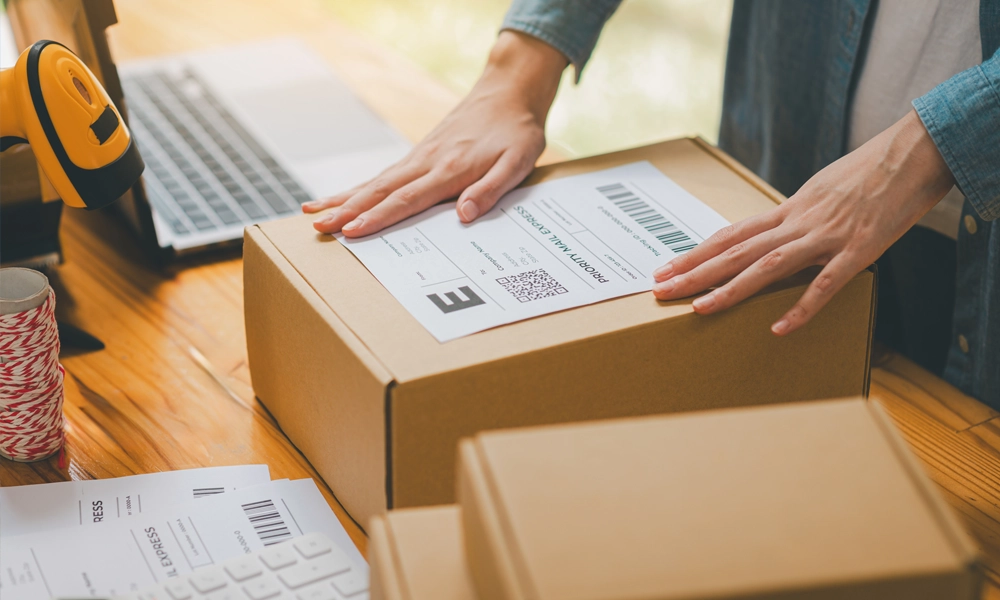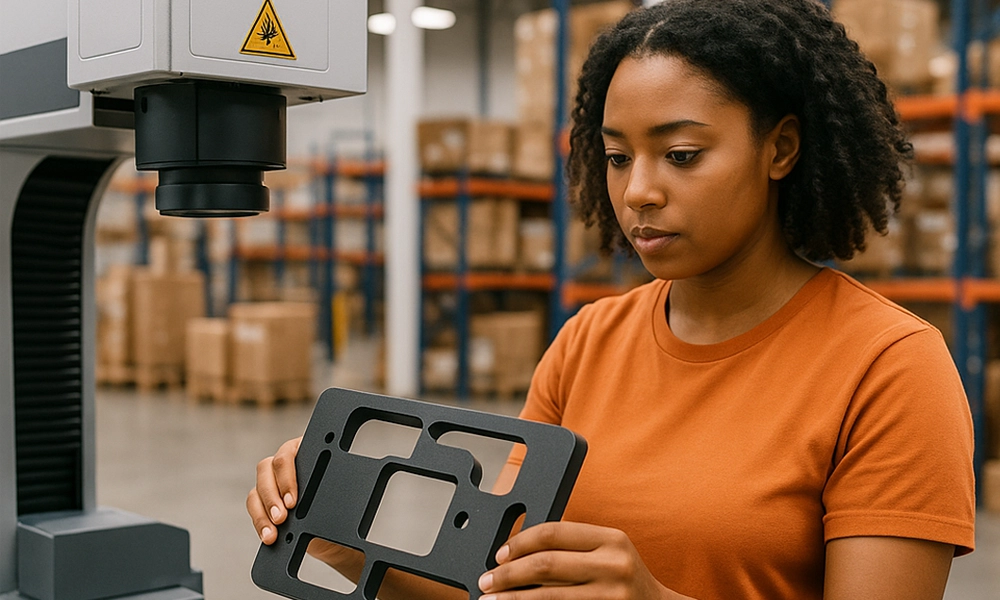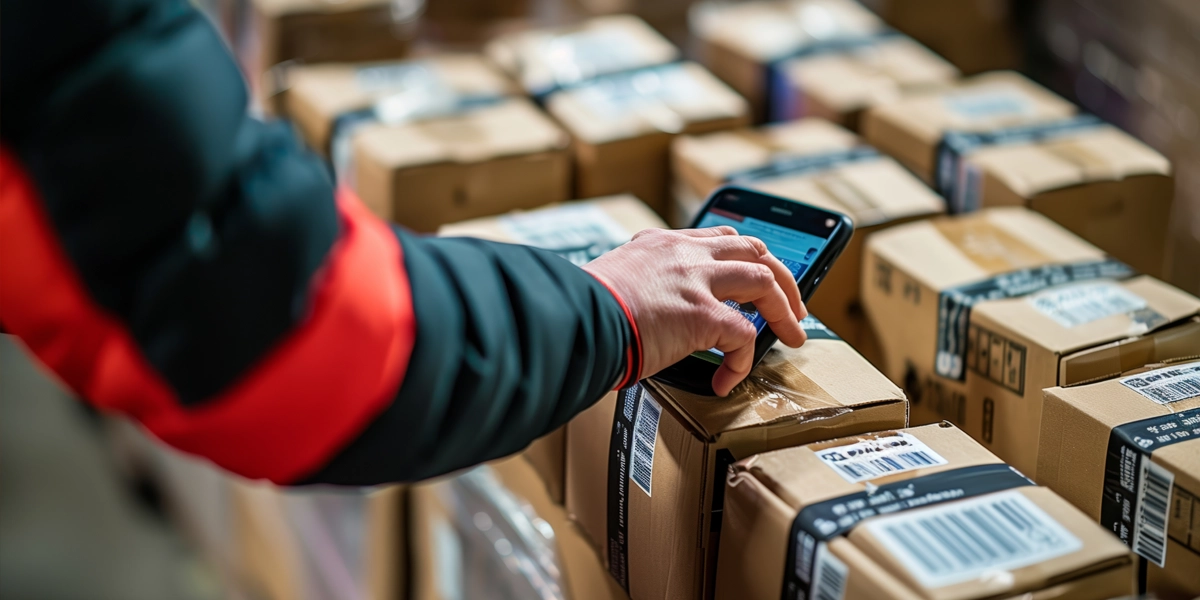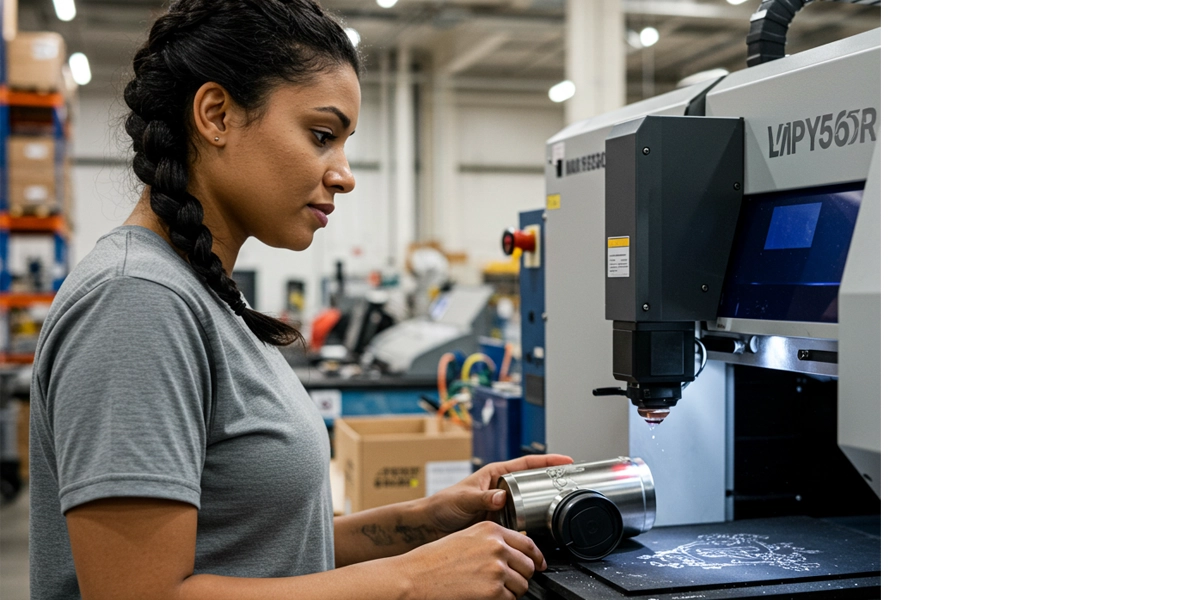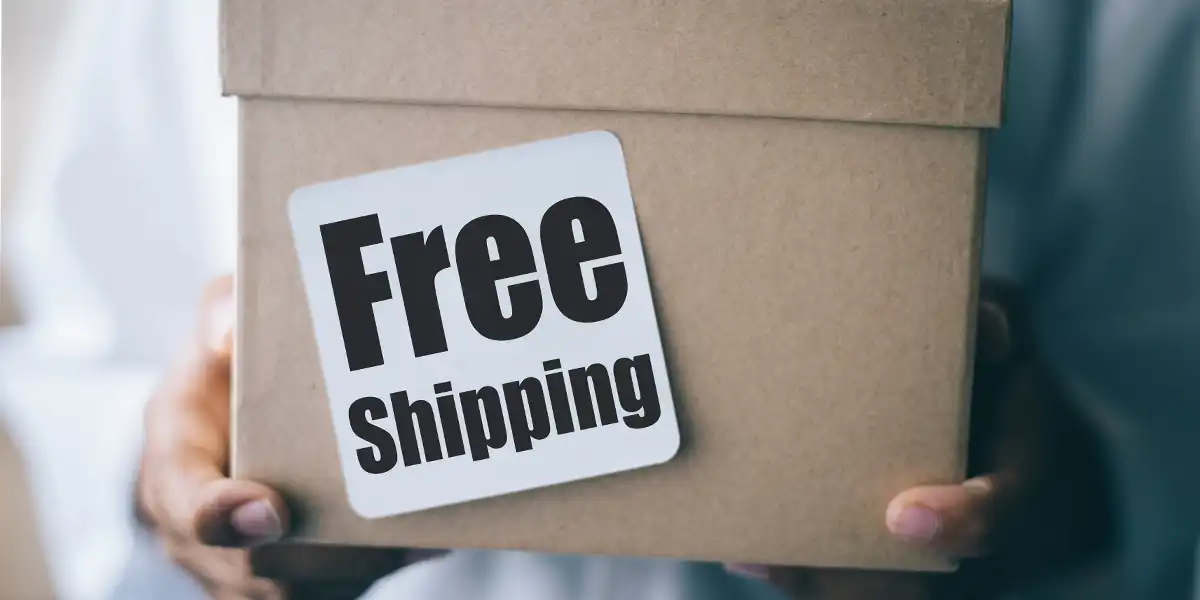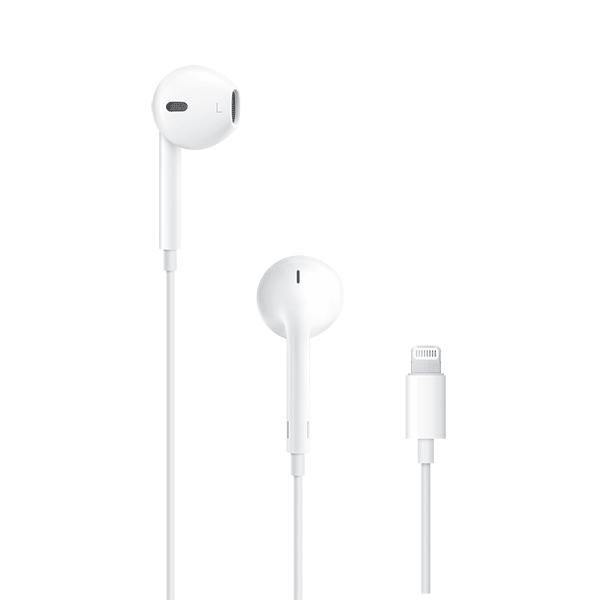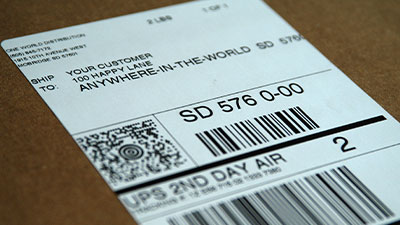In This Article:
Ecommerce personalization is the ultimate way to deliver one-of-a-kind shopping journeys explicitly tailored to each visitor. Many types of personalization in ecommerce use customer data and shopper insights to provide elevated shopping experiences that turn first-time visitors into loyal, repeat buyers. This not only enhances the customer journey but also delivers significant business results, including:
-
- Increased customer engagement by providing content and offers that align with customer interests.
-
- Higher conversion rates through personalized recommendations that reduce decision fatigue.
-
- Improved customer loyalty as individualized experiences often lead to repeat purchases.
Traditionally, ecommerce personalization encompasses tactics like product recommendations based on a customer’s location or search data but now includes personalized fulfillment solutions, too.
Personalized-to-consumer (P2C) fulfillment gives ecommerce brands a profitable opportunity to allow shoppers to customize their products with personalized engravings, embroidery, direct-to-object printing, and even custom greeting cards or packaging. Coupling P2C fulfillment with other ecommerce personalization tools will give your brand the upper hand on the competition but, more importantly, the ultimate online shopping experience for each visitor!
Understanding Ecommerce Personalization
Ecommerce personalization is an approach that modifies the online shopping experience to individual customer preferences and behaviors. It’s a dynamic, real-time process that uses customer data to create personalized interactions and offers.
Many assume ecommerce personalization simply refers to product recommendations, such as suggesting items based on past purchases or browsing history. While this is a part of the process, true ecommerce personalization encompasses much more:
-
- It can include customization of marketing messages, website navigation, email campaigns, and even pricing.
-
- It allows for dynamic content changes on a webpage based on a visitor’s past interactions or demographic information.
-
- It uses sophisticated algorithms and artificial intelligence (AI) to predict future behavior.
-
- It gives shoppers the ability to customize products using engravings or embroidery.
Ecommerce personalization has become essential for independent online retailers to keep up with industry titans like Amazon or Walmart, which already offer personalization to enhance their storefronts. Some of the reasons you should consider investing in personalization technology include:
-
- Increased Customer Expectations: Today’s online shoppers demand personalized experiences. They expect retailers to anticipate their needs and offer relevant suggestions. Salesforce surveyed more than 15,000 consumers and business buyers; more than half of respondents said they expect tailored offers. A generic shopping experience no longer cuts it. Customers want to feel understood and valued.
-
- Scalability: With advancements in AI and machine learning, retailers can now provide personalized experiences at scale. Before these technologies, personalization was time-consuming and resource-intensive. Now, AI algorithms can analyze vast amounts of data in real-time, allowing instant personalization across millions of customers simultaneously. Epsilon found that 80% of consumers are more likely to make a purchase when brands offer personalized experiences, so you should start implementing new personalization tactics sooner rather than later.
Retailers who’ve integrated ecommerce personalization have experienced higher conversion rates, increased customer loyalty, and improved overall customer lifetime value (CLTV). It’s a golden opportunity to leverage personalized tactics to enhance your customer experiences and bottom line.
Types of Personalization in Ecommerce
Retailers aiming for success in online retail must consider several types of personalization:
-
- Product Recommendations: Customized suggestions are deployed based on an analysis of a user’s browsing history, purchase behavior, and preferences.
-
- Dynamic Pricing: Adjusting prices in real-time based on market demand, competition, user behavior, and inventory levels.
-
- Content Personalization: Tailoring content displays such as banners, images, and offers to match individual customer profiles.
-
- Email Customization: Sending targeted email campaigns that resonate with specific consumer segments based on their interactions and lifecycle stage. Each type requires a strategic approach to ensure consumers receive a seamless and highly relevant shopping experience.
-
- Personalized-to-Consumer Fulfillment: P2C is a fulfillment service that helps businesses offer product personalization without any additional machinery or workforce, such as laser engraving, embroidery, custom packaging, and personalized greeting cards.
How to Deploy Personalized Shopping Experiences
To implement these personalization types effectively, retailers can leverage the following:
-
- Advanced Analytics: This plays a crucial role in deciphering large amounts of customer data to derive actionable insights.
-
- Artificial Intelligence (AI) and Machine Learning (ML) algorithms: Deliver predictive recommendations and dynamic pricing models that adapt over time using ML and AI technology.
-
- Customer Data Platforms (CDPs): These platforms aggregate and organize customer information from various sources, creating unified customer profiles essential for personalized marketing messages, offers, and content.
These technologies are not static tools but evolving assets that continuously improve the personalization process. Over time, they become better at predicting and meeting customer needs, maximizing the return on your efforts.
By incorporating these key elements into their ecommerce strategy, retailers can create compelling, individualized experiences that resonate with customers. This approach is not only about selling products but also about building loyalty by making each customer feel uniquely understood and valued.
1. Product Recommendations: The Foundation of Personalized Shopping Experiences
Product recommendations are one of the most essential and effective ways to create personalized shopping experiences that truly connect with customers. Simply pushing random products is no longer adequate; instead, businesses need to make strategic suggestions based on various customer data signals.
So, how can you generate relevant and compelling product recommendations?
Leverage Customer Data
To meet the specific needs of each customer, it’s crucial to analyze their online behavior, preferences, and purchase history. These customer data signals provide valuable insights that can be used to tailor product suggestions according to each user’s unique tastes and requirements.
For example, if a customer frequently buys organic skincare products, it makes sense to recommend other items from the same category or complementary eco-friendly beauty accessories.
However, effective product recommendations go beyond basic data analysis and involve leveraging innovative techniques such as social proofing and collaborative filtering.
Enhancing Recommendations with Social Proofing
Social proofing is a psychological concept where people tend to follow the actions of others, assuming that those actions represent the correct behavior. In ecommerce personalization, this idea translates into recommending products based on what similar customers have purchased or liked.
Imagine a scenario where a customer is browsing through a collection of books by a specific author. A section displaying “Customers who bought this also bought…” could suggest additional books by the same author or similar genres. This type of recommendation not only increases the perceived value but also encourages further exploration and potential purchases.
Making Recommendations More Precise with Collaborative Filtering
Another approach to refining product recommendations is through collaborative filtering. This method uses collective behavior patterns to make individualized suggestions. There are two commonly used techniques:
-
- User-based filtering: If User A has buying patterns similar to User B’s, then the products bought by User B (and not yet bought by User A) can be recommended to User A.
-
- Item-based filtering: If a group of users purchases two items together, then customers who buy one of those items are likely to be interested in the other.
Incorporating these innovative approaches into your ecommerce personalization strategy can improve the accuracy of your product recommendation algorithms, drive customer engagement, and foster loyalty. Now, let’s explore how dynamic pricing strategies can further enhance your ability to create unique shopping experiences for each visitor.
2. Dynamic Pricing Strategies for Individualized Offers
Dynamic pricing allows retailers to adjust prices in real time based on factors like market demand, competition, and consumer behavior. This sophisticated pricing strategy is vital to ecommerce personalization, allowing retailers to match product value with customer expectations.
What is Dynamic Pricing?
Dynamic pricing, also known as surge pricing or demand pricing, is an approach that uses advanced algorithms and real-time data to set flexible prices for products or services. Here’s how it benefits both sellers and customers:
-
- For retailers, it maximizes profit margins and boosts sales during high-demand periods.
-
- Customers gain access to competitive pricing and deals that can enhance their perceived value of purchases.
Optimizing Sales with Personalized Offers
Personalized offers derived from dynamic pricing algorithms can increase conversions by presenting shoppers with prices that resonate with their willingness to pay. For instance, a user looking for winter boots might be shown a price calculated based on their browsing history, purchase patterns, and the current demand for such items. However, during off-peak times, another user might receive a discounted offer on the same boots to encourage purchase when demand is lower. Dynamic pricing allows retailers to increase conversions by pairing each shopper with a price that fits their user behavior.
Ensuring Transparency and Fairness
While dynamic pricing offers significant advantages, balancing profitability with customer trust is crucial. Consider these strategies for maintaining transparency and fairness:
-
- Clear Communication: Always inform customers if prices fluctuate due to dynamic pricing. A brief explanation can help maintain trust.
-
- Price Caps: Implement caps on how high prices can go during peak times to avoid alienating customers with exorbitant rates.
-
- Best Price Guarantees: Offering a best price guarantee can assure customers they’re getting great value regardless of dynamic changes.
-
- Customer Data Protection: Uphold stringent data protection policies while using customer information for personalized pricing, ensuring compliance with privacy laws.
Implementing Dynamic Pricing Models
When adopting dynamic pricing models, keep these points in mind:
-
- Data Analysis: Utilize robust analytics tools to gather actionable insights from customer data.
-
- Real-Time Responsiveness: Ensure your systems can adjust prices in real time to respond to changing market conditions.
-
- Customer Segmentation: Use segmentation techniques to tailor prices to different customer groups’ behaviors and preferences.
-
- Testing: Continuously test your dynamic pricing strategies to refine them for optimal performance.
By integrating dynamic pricing into your ecommerce personalization strategy, you can deliver personalized offers that resonate with each customer to increase conversions.
3. Leveraging Customer Segmentation Techniques for Targeted Marketing Campaigns
The effectiveness of marketing campaigns in ecommerce depends on delivering relevant content to the right audience at the best time. Customer segmentation is the strategic division of a customer base into distinct groups with similar characteristics, behaviors, or needs.
Geolocation/IP Address Segmentation
-
- Using geolocation technology allows for identifying a customer’s physical location based on their IP address.
-
- Retailers can create tailored promotions for specific locations, adjust product offerings according to regional preferences, and even change website language settings automatically.
-
- Seasonal campaigns can align with local weather or events, ensuring marketing messages resonate with potential customers’ daily experiences.
Customer Cohorts
-
- Segmenting by customer cohorts involves grouping individuals based on shared attributes or behaviors such as purchase history, acquisition channel, or engagement level.
-
- Retailers can identify valuable segments, such as repeat purchasers or high-spending customers, and create loyalty programs specifically designed for these groups.
-
- Analyzing cohort data provides insights into different stages of customers’ journeys, enabling better prediction of future buying patterns and retention strategies.
Ethical Considerations and Trust
When using data-driven segmentation:
-
- It is very important to be transparent with customers about how their data is being used; clear communication can build trust and reduce privacy concerns.
-
- Following data protection regulations like GDPR ensures that your practices are not only ethical but also legal.
-
- Giving customers options to manage their data preferences gives them control and strengthens their trust in your brand.
Incorporating these techniques into your marketing strategy requires balancing personalization and privacy. Successful retailers in 2024 understand that maintaining customer trust is just as crucial as using advanced segmentation methods. By ethically utilizing customer data to provide personalized experiences, brands can build long-lasting relationships with their audiences, ultimately boosting both satisfaction and sales.
Customer segmentation is an excellent way to lower overall logistics costs. Check out our guides on sustainable fulfillment, warehouse picking strategies, and ecommerce inventory management to help further reduce operating expenses.
4. Creating Personalized Onsite Experiences through Dynamic Content
Dynamic content allows retailers to change website content to match individual user preferences, behaviors, and past interactions. This approach uses different types of content – from text and images to offers and product displays – that automatically adjust to resonate with each visitor.
Tailored Messaging Across Touchpoints
Dynamic content blocks serve as channels for personalized communication throughout a customer’s journey:
-
- Homepage Customization: Changing homepage visuals and promotional banners to reflect the interests of returning visitors.
-
- Product Page Optimization: Displaying products similar or complementary to items previously viewed or purchased.
-
- Tailored Calls-to-Action (CTAs): Adjusting CTAs based on the user’s stage in the buying cycle for higher conversion rates.
-
- Personalized Recommendations: Featuring product selections based on browsing history, cart contents, and purchase patterns.
These targeted adjustments ensure each interaction feels exclusive and curated for the individual, enhancing their connection with your brand.
Optimizing Dynamic Content Delivery
To maintain site performance while providing this level of customization, consider these best practices:
-
- Employ Robust Caching Practices: Utilize advanced caching strategies to store personalized elements without repeatedly querying the database.
-
- Asynchronous Loading: Implement asynchronous loading of dynamic content to allow the rest of the page to load uninterrupted, reducing perceived wait times.
-
- Testing for Performance: Rigorously test different dynamic content scenarios to identify potential slowdowns or user experience issues.
-
- Content Delivery Networks (CDNs): Use CDNs effectively to distribute personalized content closer to the user’s location, speeding up delivery times.
-
- Lightweight Personalization Tokens: Implement lightweight personalization tokens that trigger content changes without heavy overhead.
By applying these tactics, retailers can ensure seamless integration of dynamic content into their ecommerce platforms without sacrificing speed or functionality.
The strategic use of dynamic content in ecommerce personalization empowers brands to create meaningful connections with customers. It allows for an adaptive online environment where every visit is a fresh opportunity for engagement, ultimately driving loyalty and conversions.
5. Increase Profits with Personalized-to-Consumer (P2C) Fulfillment
P2C fulfillment is a different type of personalization that doesn’t require customer data or machine learning to increase your sales and deliver a unique, interactive shopping experience. P2C is an exclusive type of 3PL fulfillment solution offered by OWD that allows brands to use our free cart plugin to turn their products into signature items and unique gifts.
Custom Engravings, Embroidery, and Greeting Cards
Once you install our P2C technology, your shoppers can personalize specified items with:
-
- Laser Engravings: Customers can turn ordinary items into memorable keepsakes and gifts with custom engraving at checkout, such as custom monograms or messages.
-
- Embroidery: Shoppers can embroider custom quotes, images, and more on any type of fabric to make one-of-a-kind products.
-
- Direct-to-object printing: (D2O) is a specialized printing technique that allows images, designs, and text to be printed onto objects such as apparel, phone cases, mugs, pet products, and glassware.
-
- Greeting Cards: At checkout, your customer is given the option to add a custom greeting card. They can choose from a wide variety of print stock with a customized message inside, and we’ll include it in their order.
What Kind of Products Can Personalize?
We can customize a variety of products using our advanced machinery, including:
-
- Wood
-
- Paper
-
- Glass
-
- Metals
-
- Plastics
-
- Leather
-
- Rubber
-
- Fabrics
How Does P2C Fulfillment Work
Our P2C plugin seamlessly integrates with over 200 ecommerce platforms. Once a personalization expert helps review the products you want to customize, the process is simple:
-
- Your customer places an order.
-
- The product is scanned and unboxed in our production room.
-
- A team member places the product in a machine and inputs the customer’s design specifications.
-
- The product is personalized.
-
- The product is checked and approved by our team.
-
- The product is scanned out for its final pack-out and shipping.
To see the process first-hand, watch the video below.
Ready to Start Personalizing?
As consumer expectations continue to evolve towards more tailored and meaningful interactions, investing in different types of personalization in ecommerce is not just a trend but a necessity to compete with big retailers already offering advanced, personalized shopping experiences.
Whether it’s beginning to leverage your CDP to deploy dynamic pricing and content or partnering with a 3PL fulfillment center that offers seamless product customization capabilities, leveraging ecommerce personalization is your ticket to higher conversions and customers who can’t wait to shop on your online store. Use our call center services and fulfillment services to elevate your ecommerce business and substantially lower costs.
Learn more about how a 3PL works and everything B2B/D2C logistics and check out some of our ultimate guides below:
In This Article:
Subscribe to our Newsletter
Tincidunt urna mauris eu quam vulputate lobortis sit. Purus feugiat arcu nunc quisque massa ut.




